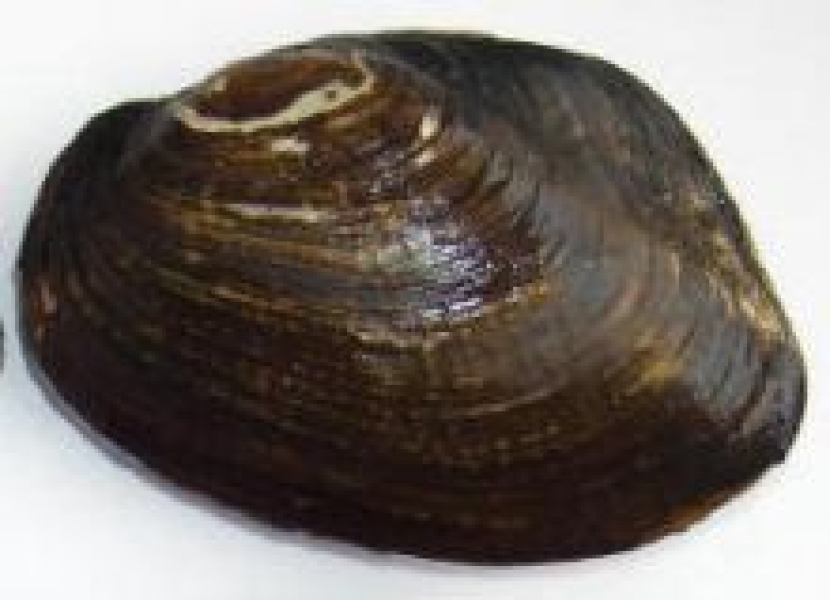The kākahi or freshwater mussel was a valuable mahinga kai resource for many Māori.
Common name: Freshwater mussel
Scientific name: Echyridella menziesi
Te Reo Māori names: includes kākahi, kāeo, and torewai
About this species
Freshwater mussels are under threat and are declining, both in New Zealand and worldwide. This decline has been attributed to the loss of habitat associated with river regulation, eutrophication, and other types of pollution, and possibly through loss of the host fish on which completion of the life cycle depends.
Kākahi are common and widespread throughout New Zealand, in habitats ranging from small, fast-flowing streams to lakes.
Traditional knowledge
The kākahi or freshwater mussel was a valuable mahinga kai resource for many Māori. For example, in the Te Arawa Lakes, despite being considered the least appetising of the fisheries resources, it was the most important in story, song, and proverb. Kākahi were collected from all the Te Arawa lakes but were most plentiful and easily harvested in the shallower lakes such as Rotorua, Rotoehu, and Rotokākahi. Traditionally, they were collected throughout the year, but were best in winter. They were eaten raw or lightly boiled, or dried in the sun for use in stews. They were also used in the feeding of motherless infants and as a food for the sick (i.e., as a rongoā or medicine). The kākahi shell also had a number of uses that included hair cutting in adults, cutting the umbilical cord of newborn children, scraping vegetables, and as rattles on kites.
Impacts on kākahi
No single impacting factor has been identified as being consistently important to the decline of kākahi. Modifications to, or destruction of habitat (e.g., river regulation, eutrophication, sediment type, water quality, water velocity, the degree of sedimentation, and the angle or slope of a lake or river bed) are likely to be key drivers of this decline, affecting adult populations as well as host fish species which are essential for completion of the kākahi life cycle.
The presence and abundance of the original fish host (kōaro) of kākahi, that carries the parasitic larval stage (the glochidia), may have impacted on kākahi numbers. Glochidium larva attach to fish a little like parasites in the early part of their life before moving to soft, sandy sediments in lake and river beds. Reductions in kōaro abundance may have contributed to the decline in kākahi numbers.
To date there has been limited research undertaken in New Zealand investigating key drivers influencing presence, distribution, and density of freshwater mussels in lakes.
References and further reading
Find papers relevant to all Aotearoa freshwater fish on our reference page
Kākahi, freshwater mussels
- James, M. 1985. Distribution, biomass and production of the freshwater mussel, Hyridella menziesi (Gray), in Lake Taupo, New Zealand. Freshwater Biology 15: 307-314.
- James, M. 1987. Ecology of the freshwater mussel, Hyridella menziesi (Gray) in a small oligotrophic lake. Arch. Hydrobiol. 108: 337-348.
- McDowall, R.M. 2002. Decline of the kakahi – identifying cause and effect. Water and Atmosphere 10(4): 8-9.
- Ogilvie, S. C. 1993. The effects of the freshwater mussel Hyridella menziesi on the phytoplankton of a shallow Otago lake. Unpublished MSc Thesis. University of Otago. 127 pp.
- Walker, K. F. 1981. Ecology of freshwater mussels in the River Murray. Australian Water Resources Council Technical Paper 63: 1-119.
- Walker, K. F., Byrne, M., Hickey, C. W., Roper, D. S. 2001. Freshwater mussels (Hyriidae) of Australasia. In: Bauer, G.; Wächtler, K. (eds). Evolution of the freshwater mussels Unionoida, pp. 5–31. Ecological Studies 145. Springer-Verlag, Berlin and Heidelberg.

